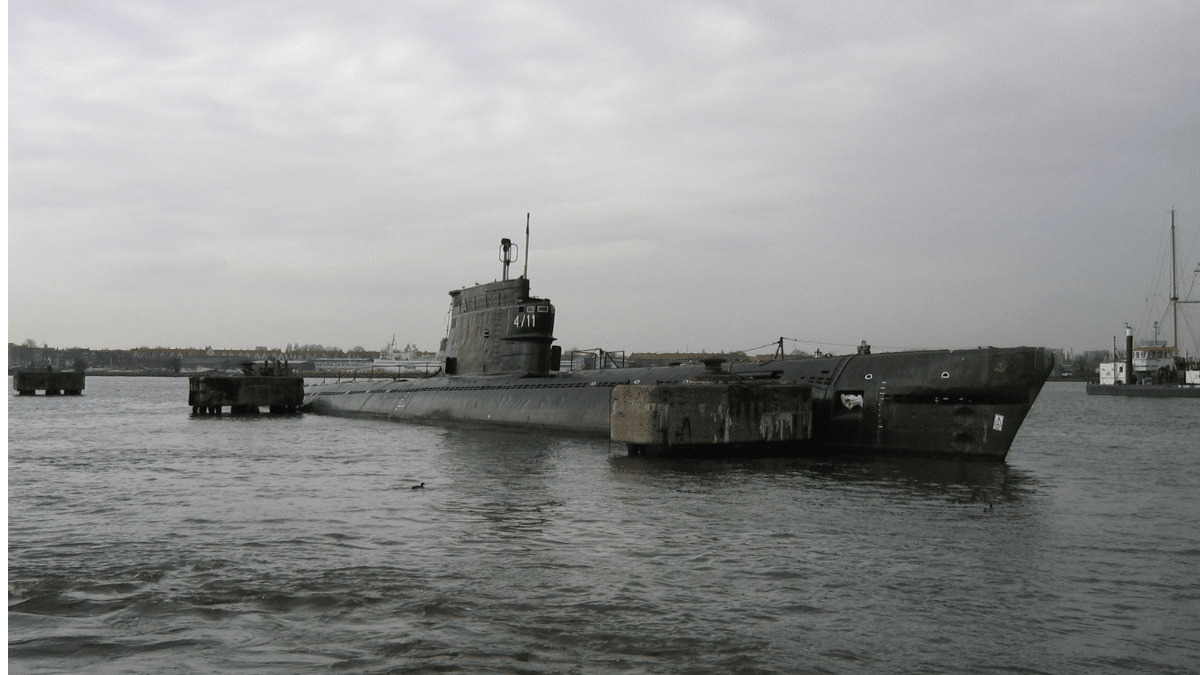 Image Credits - Wikipedia
Image Credits - Wikipedia
Project 611, often referred to as the Zulu class by NATO, was a major advancement in Soviet assault submarine design after World War II. Similar to the American GUPPY fleet-boat adaptations, these submarines appeared simultaneously with the Whiskey-class submarines and had a sonar configuration derived from the World War II German Type XXI U-boat.
The early Zulu-class submarines had no snorkels and twin 57mm and twin 25mm anti-aircraft weapons in their original designs. But soon after going into service, snorkels were fitted in place of the weapons. Inspired by the German U-boat designs, this design change represented the wider developments in conventional submarine development between 1946 and 1960.
Project AV 611, the conversion of six Zulu-class submarines into the world’s first ballistic missile submarines, marked a dramatic change in 1956. Only one of these submarines had an R-11FM Scud missile installed, whilst the other two had two Scuds apiece. Though it necessitated the submarine to surface and raise the missile out of the expanded sail for firing, this creative alteration represented a turning point in submarine capabilities. Notably, on September 16, 1955, the Soviet submarine B-67 launched a missile successfully.
Twenty-six Zulu-class submarines were built between 1952 and 1957; eight were built in Leningrad and eighteen in Severodvinsk. Most of them were renamed in the 1970s or 1980s after being initially assigned the designations B-61 through B-82 and B-88 through B-91. NATO awarded the reporting names Zulu I through Zulu V to the various subclasses; the latter particularly referred to the five converted missile-firing submarines (the prototype not included). The Zulu-class submarines served as a model for the more successful Foxtrot-class submarines, and the Golf-class ballistic missile submarines that followed were influenced by their hull design. Sadly, the majority of Zulu-class submarines were eventually decommissioned and destroyed after being converted to non-combat roles.
General Characteristics:
With a displacement of 1875 tonnes (1905 metric tonnes) while surfaced and 2387 tonnes (2425 metric tonnes) when submerged, the attack submarine Zulu-class was a sight to behold. This imposing vessel displayed a streamlined and strong design with a length of 90 metres (295 feet), a beam of 7.5 metres, and a draught of 5.14 metres.
The Zulu-class submarine was propelled by a powerful system consisting of three diesel engines that produced 6000 horsepower each, and three electric motors that combined produced 5400 horsepower. With these parameters, the submarine could reach a surface speed of 18 knots (33 km/h) and a submerged speed of 16 knots (30 km/h). The submarine demonstrated its adaptability and effectiveness in underwater missions by operating down to a test depth of 200 metres (656 feet).
The Zulu-class submarine had a crew complement of seventy officers and men, making it well-suited as an attack submarine. Its armament consisted of four stern and six bow 533-mm (21-inch) torpedo tubes, each able to hold 22 torpedoes. Interestingly, six of these submarines were equipped with R-11FM Scud missiles, which increased both their offensive and strategic range.
